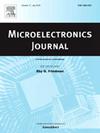一种能有效抵抗建模攻击的混沌强过渡效应环振PUF
IF 1.9
3区 工程技术
Q3 ENGINEERING, ELECTRICAL & ELECTRONIC
引用次数: 0
摘要
信息技术的飞速发展虽然给人类的生活方式带来了前所未有的便利和革命性的变化,但也带来了严重的隐私和安全问题。在网络物理系统(CPS)中交换大量敏感信息,这些信息的存储和身份验证过程极易受到恶意攻击者的关注。强物理不可克隆功能(PUF)是轻量级物联网设备中身份认证的关键硬件安全原语。然而,大多数现有的强大puf都无法抵御基于机器学习的高级建模攻击。本文提出了一种混沌强跃迁效应环振(CS-TERO) PUF,它结合了强TERO的非线性和混沌设计的不可预测性来抵抗建模攻击。强大的PUF功能是通过可配置的双异或门和扩展的TERO链实现的。混沌操作是通过使用逻辑映射函数混淆挑战来执行的。实验结果表明,CS-TERO PUF成功抵御了最先进的建模攻击,所有攻击的准确率都在70%以下。与其他抗攻击的建模PUF相比,我们的CS-TERO PUF需要更少的硬件资源,与最轻量级的解决方案相比,节省了近25%的面积开销。此外,CS-TERO PUF的可靠性为98.27%,唯一性为53.65%,均匀性为49.26%,达到了先进的强PUF应用标准。此外,随机性还通过了国际认可的NIST 800-22 S P测试。本文章由计算机程序翻译,如有差异,请以英文原文为准。
A chaotic strong transition effect ring oscillator PUF with effective immunity to modeling attacks
Although the rapid development of information technology has brought unprecedented convenience and revolutionary changes to human lifestyles, it has also led to serious privacy and security issues. Massive amounts of sensitive information are exchanged within cyber-physical systems (CPS), and the storage and authentication processes of this information are highly susceptible to the attention of malicious attackers. Strong physical unclonable function (PUF) is a crucial hardware security primitive for identity authentication in lightweight internet of things (IoT) devices. However, most of the existing strong PUFs have failed to resist advanced modeling attacks based on machine learning. The paper proposes a chaotic strong transition effect ring oscillator (CS-TERO) PUF, which combines the nonlinearity of strong TERO and the unpredictability of chaotic design to resist modeling attacks. The strong PUF feature is achieved through configurable dual XOR gates and extended TERO chains. Chaotic operations are performed by obfuscating challenges using logical mapping functions. Experimental results demonstrate that the CS-TERO PUF successfully resists state-of-the-art modeling attacks, and the accuracy of all attacks is below 70 %. Compared to other modeling attack-resilient PUFs, our CS-TERO PUF requires fewer hardware resources, saving almost 25 % of area overhead compared to the most lightweight solutions. Additionally, the CS-TERO PUF demonstrates a reliability of 98.27 %, uniqueness of 53.65 %, and uniformity of 49.26 %, reaching an advanced strong PUF application standard. Furthermore, the randomness has also passed the internationally accredited NIST 800-22 S P test.
求助全文
通过发布文献求助,成功后即可免费获取论文全文。
去求助
来源期刊

Microelectronics Journal
工程技术-工程:电子与电气
CiteScore
4.00
自引率
27.30%
发文量
222
审稿时长
43 days
期刊介绍:
Published since 1969, the Microelectronics Journal is an international forum for the dissemination of research and applications of microelectronic systems, circuits, and emerging technologies. Papers published in the Microelectronics Journal have undergone peer review to ensure originality, relevance, and timeliness. The journal thus provides a worldwide, regular, and comprehensive update on microelectronic circuits and systems.
The Microelectronics Journal invites papers describing significant research and applications in all of the areas listed below. Comprehensive review/survey papers covering recent developments will also be considered. The Microelectronics Journal covers circuits and systems. This topic includes but is not limited to: Analog, digital, mixed, and RF circuits and related design methodologies; Logic, architectural, and system level synthesis; Testing, design for testability, built-in self-test; Area, power, and thermal analysis and design; Mixed-domain simulation and design; Embedded systems; Non-von Neumann computing and related technologies and circuits; Design and test of high complexity systems integration; SoC, NoC, SIP, and NIP design and test; 3-D integration design and analysis; Emerging device technologies and circuits, such as FinFETs, SETs, spintronics, SFQ, MTJ, etc.
Application aspects such as signal and image processing including circuits for cryptography, sensors, and actuators including sensor networks, reliability and quality issues, and economic models are also welcome.
 求助内容:
求助内容: 应助结果提醒方式:
应助结果提醒方式:


